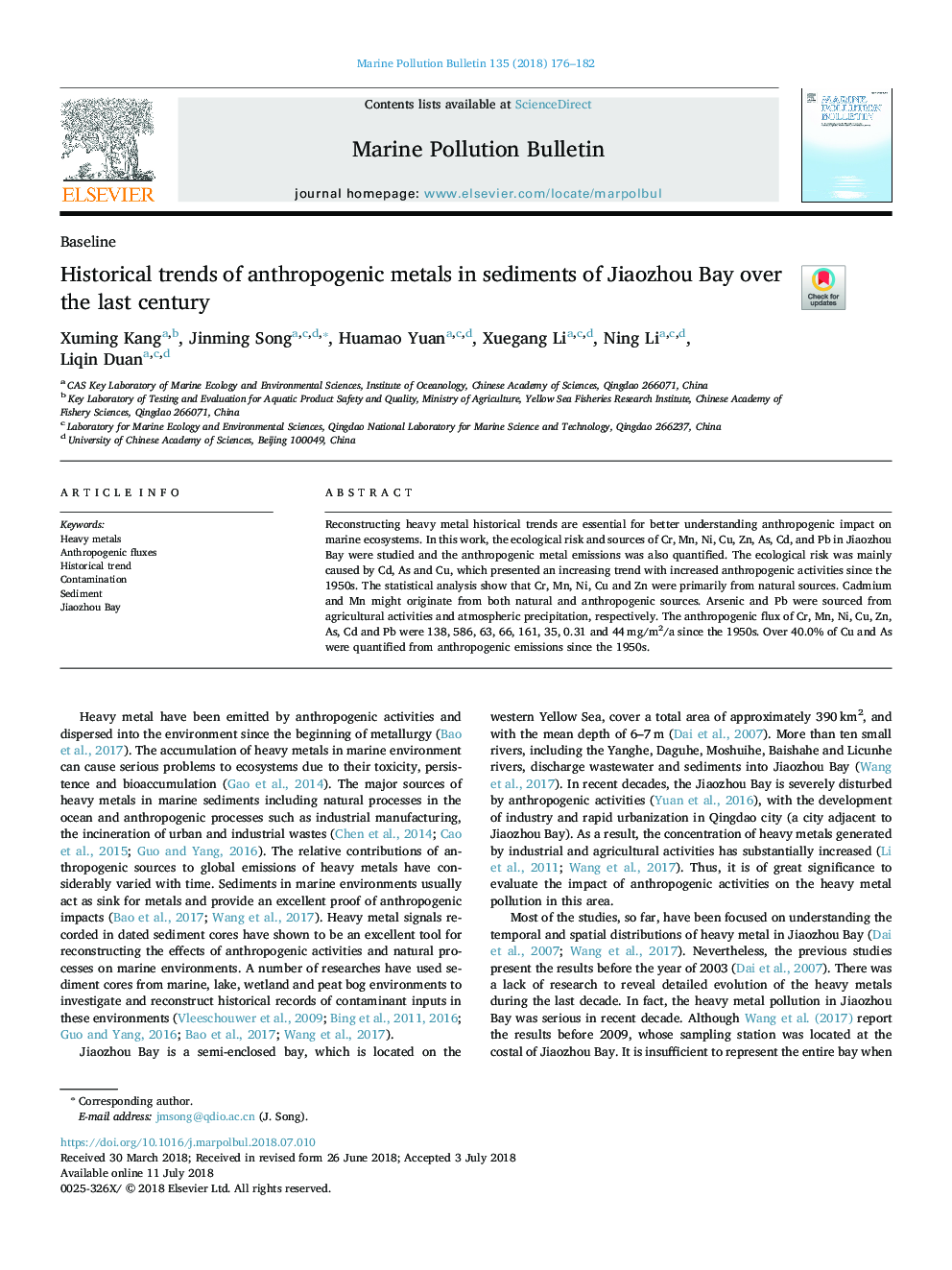| Article ID | Journal | Published Year | Pages | File Type |
|---|---|---|---|---|
| 8870853 | Marine Pollution Bulletin | 2018 | 7 Pages |
Abstract
Reconstructing heavy metal historical trends are essential for better understanding anthropogenic impact on marine ecosystems. In this work, the ecological risk and sources of Cr, Mn, Ni, Cu, Zn, As, Cd, and Pb in Jiaozhou Bay were studied and the anthropogenic metal emissions was also quantified. The ecological risk was mainly caused by Cd, As and Cu, which presented an increasing trend with increased anthropogenic activities since the 1950s. The statistical analysis show that Cr, Mn, Ni, Cu and Zn were primarily from natural sources. Cadmium and Mn might originate from both natural and anthropogenic sources. Arsenic and Pb were sourced from agricultural activities and atmospheric precipitation, respectively. The anthropogenic flux of Cr, Mn, Ni, Cu, Zn, As, Cd and Pb were 138, 586, 63, 66, 161, 35, 0.31 and 44â¯mg/m2/a since the 1950s. Over 40.0% of Cu and As were quantified from anthropogenic emissions since the 1950s.
Related Topics
Physical Sciences and Engineering
Earth and Planetary Sciences
Oceanography
Authors
Xuming Kang, Jinming Song, Huamao Yuan, Xuegang Li, Ning Li, Liqin Duan,
